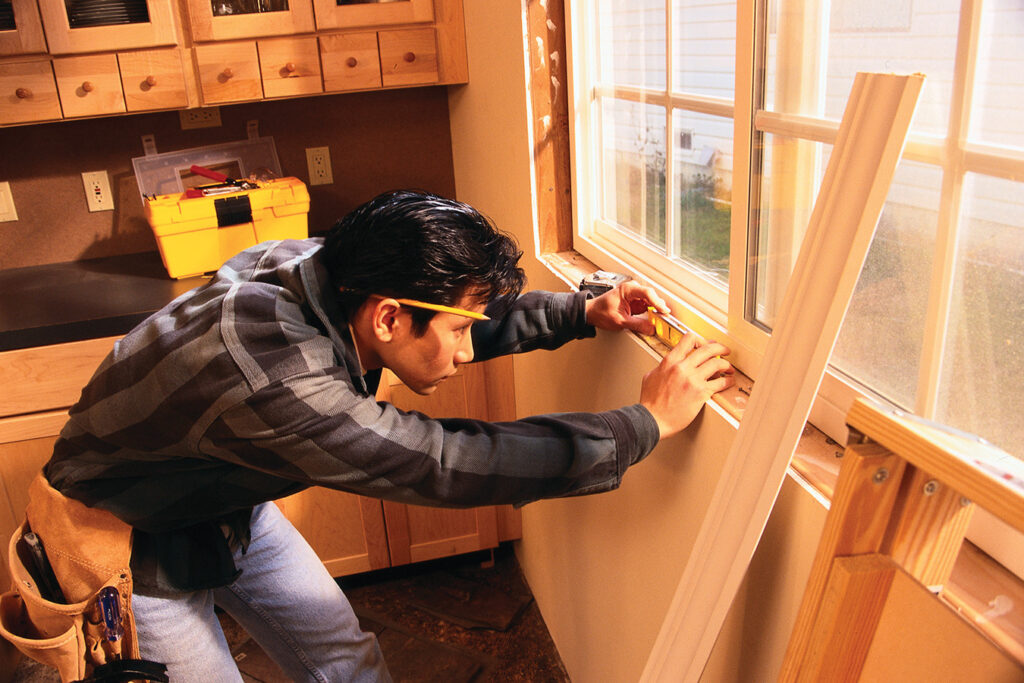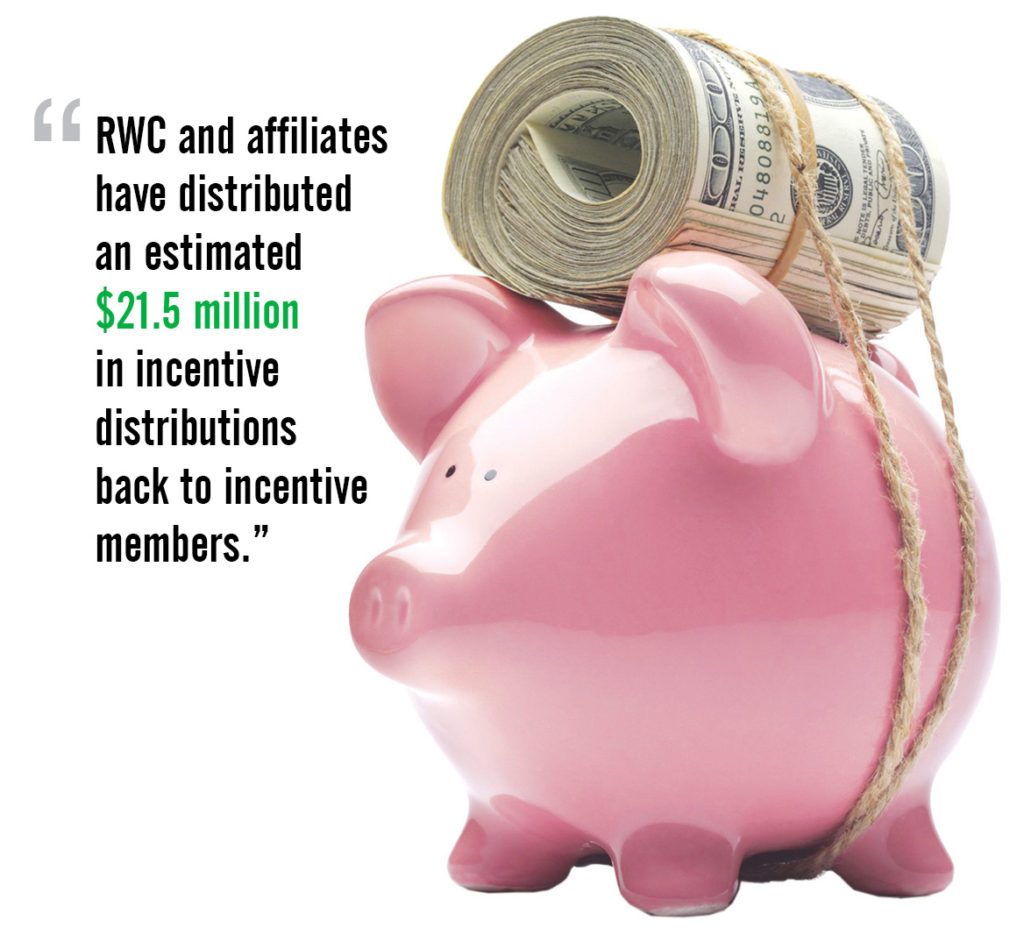Source: nahb.com
Whole house remodels and additions are regaining market share according to a 2016 survey of remodelers released by NAHB Remodelers, the remodeling arm of the National Association of Home Builders (NAHB). The survey revealed the most common remodeling projects in 2016, compared to historical results of the survey.
“While bathroom and kitchen remodels remain the most common renovations, basements, whole house remodels and both large and small scale additions are returning to levels not seen since prior to the downturn,” stated the 2016 NAHB Remodelers Chairperson. “Clients want to add more space, but remodeling a significant portion of the home is no easy feat. That’s why it is important to work with a professional remodeler who has the integrity and expertise to take on these large remodeling jobs.”
 Remodelers reported that the following projects were more common than in 2013:
Remodelers reported that the following projects were more common than in 2013:
• Whole house remodels increased by 10 percentage points
• Room additions increased by 12 percentage points
• Finished basements increased by 8 percentage points
• Bathroom additions increased by 7 percentage points
Bathrooms topped the list of most common remodeling projects for the fifth time since 2010. Eighty-one percent of remodelers reported that bathrooms were a common remodeling job for their company while 79 percent of remodelers reported the same for kitchen remodels. Window and door replacements decreased to 36 percent from 45 percent in 2014.
Whether you are currently working on remodeling projects due to the colder weather and frozen ground or because that's what your customers are opting for, Residential Warranty Company, LLC & HOME of Texas have great remodeler warranty options at your fingertips. When it comes to revamping space, creating an addition to a home, or totally reinventing the look and style of a home, homeowners want to know the work is being done by a quality, professional remodeler. Contractors who offer the RWC warranty / HOME warranty provide clients with written, insured warranty protection, including a dispute resolution process.
It takes a lot of tools to both complete a remodeling project and to build a business. RWC / HOME offer you a great selection of tools. Talk to your account executive today for more details on the remodeler warranty, or any program available in our menu of choices.
 Source: proremodeler.com
Source: proremodeler.com
Readers of news articles about the housing industry have been inundated for a while with stories about Millennials and their desire to live in the city. Headlines such as “Millennials Prefer Cities to Suburbs, Subways to Driveways” and “The New American Dream Is Living in a City, Not Owning a House in the Suburbs” popped up frequently. And polling companies provided the data to back it up: The Nielsen Company, for example, reported that 62 percent of young people “like having the world at their fingertips,” preferring to live in “dense, diverse urban villages where social interaction is just outside their front doors.”
But around the middle of 2015, the stories about Millennials started to shift. We began to see more stories like, “Think Millennials Prefer the City? Think Again …” And now, a survey from the National Association of Realtors says that Millennials are finally starting to buy homes. And where are they buying them? That's right, in the ’burbs.
Why all of a sudden the change? Perhaps Millennials are now ready to settle down and start families and prices are cheaper in the suburbs. Or because they want to raise their kids in places that remind them of their own childhood. Whatever the reasons, the numbers show that buyers under the age of 35 now make up the largest share of homebuyers (35 percent) and that 51 percent of them bought homes in the suburbs or in subdivisions.
It stands to reason that these buyers, whose median age is 30, are the leading edge of their generation. As the rest of this generation, 80 million strong, reach their 30s, they will likely follow the same path—research from the Demand Institute says 75 percent of Millennials consider homeownership an important long-term goal and 48 percent say they plan to buy within the next five years. The question is, are you building homes they will want to buy?
So what exactly does this young group want? Turns out they want pretty much the same things almost everyone else wants: a nice neighborhood; good schools; access to public transportation; & convenient outdoor space to walk and exercise. Another requirement is close proximity to social activities such as shops, cafés, and restaurants. As for the house itself, they are looking for an open plan, ample storage, energy efficiency, low-maintenance living, space for easy entertaining, and of course good cell reception. But the single most important thing Millennials are looking for is living within their means in a home they can comfortably afford.
Unfortunately, the problem is, there just aren’t enough new homes being built that Millennials can afford. Because of land and labor costs, zoning and other regulations, most builders are targeting a smaller, more affluent group of buyers. A lot of new homes are large and include more expensive features and amenities. Something that a young, first time home buyer, will probably pass right by because it is out of their price range. A recent study by real estate advisors RCLCO revealed that when first-time buyers considered new and existing homes in their searches, only 18 percent of them bought a new home.
There are some success stories out there, though. RCLCO reports that a concerted effort by some master planned communities to offer a range of product types, such as townhomes, cottage court bungalows, and small single-family homes—in addition to conventional single-family homes — “can still achieve premiums on a dollars-per-square-foot basis.” The company cites the Daybreak master plan near Salt Lake City as a good example of a project that successfully integrates midscale, mid-priced product within a larger community.
Companies that are building more affordable homes and marketing them to Millennials are already starting to reap the rewards. It’s time for more builders to start thinking about creating a product that is attainable for the largest faction of buyers we may ever see.
By now we all know it's not a good idea to post sensitive information on social networking sites or blast private data through cyber space without taking the proper precautions. The last thing you want is for private information to be compromised when bouncing from server to server.
Keeping yourself secure from theft and vulnerability is a top priority in today's digital age. That's why Residential Warranty Company, LLC and affiliates HOME of Texas and MHWC have a secure upload portal on each company website for members and prospective members to use in uploading information and important documents to the home warranty companies.
Instead of emailing, faxing or mailing documents for new memberships, renewal memberships or home warranty resolution matters, the upload portal allows for secure transfer of data electronically, efficiently and economically.
Secure upload links can be found in the drop down menu when you hover over the "Builders" tab (or the "Manufacturer's tab on the MHWC affiliate site), as well as at the very bottom of every webpage. Simply follow the prompts to send documents securely. Better safe than sorry!
 Who doesn't love a perk that allows you to reap the rewards of something that you already do... provide quality construction and outstanding customer satisfaction. That's right, cash in on YOUR excellent customer service by joining the Incentive Program!
Who doesn't love a perk that allows you to reap the rewards of something that you already do... provide quality construction and outstanding customer satisfaction. That's right, cash in on YOUR excellent customer service by joining the Incentive Program!
Joining the Incentive Program is the best way for our Members to maximize their dollars plus enjoy additional benefits that only this program offers.
RWC established this program over 25 years ago as a way to reward our members for their good claims experience. Since then, RWC and affiliates have distributed $21.5 million in Incentive distributions back to Incentive members.
WHO IS ELIGIBLE?
A Member must enroll at least 20 homes per year or have an annual enrolled sales volume of $2 million. A free analysis illustrating how the Incentive Program can work for you is available upon request.
ADDITIONAL BENEFITS:
• The annual fee of $295 is waived for Incentive Members, saving an additional $1180 in years 2-5 of membership.
• The value of the Incentive distributions greatly reduces the effective cost of the warranty fee.
• The Member enjoys a locked-in enrollment rate under the standard program throughout the duration of their Incentive membership.
HOW DO I JOIN?
If you think your company will meet the eligibility requirements, call us to take the next step in building your own Incentive reward! Contact us at 800-247-1812, Ext 2149 or email sales@rwcwarranty.com.
All of the Builder warranty programs offered by Residential Warranty Company, LLC, HOME of Texas or MHWC feature mandatory binding arbitration of Unresolved Warranty Issues.* RWC and its Builder members have been very successful at persuading courts to recognize and enforce the warranty’s mandatory binding arbitration provision. Courts across the country have removed cases from the courthouse and directed them to arbitration under our Limited Warranty Programs.
A good example can be found in this case study. Residential Warranty Company, LLC (RWC) had issued a warranty on a home, which was in Year 1 of coverage, and the homeowners filed a lawsuit against the Builder. The Builder was well equipped to defend himself with the home warranty book, the application for warranty and his own contract, which included language that made the RWC home warranty, including the warranty’s binding arbitration language, applicable to any alleged warranty defects in the home. Even though the homeowners argued that RWC’s warranty should not be enforced in that state, the court endorsed RWC’s warranty, and the motion brought by the Builder to compel arbitration and dismiss the homeowners’ lawsuit was granted in its entirety.
Consequently, the homeowners initiated a request for warranty performance with RWC. Prior to arbitration, the Builder’s home warranty provides for informal mediation. The parties agreed to use RWC’s mediation to try to settle the disputes about the alleged warranty defects. RWC became actively involved mediating between the homeowners and the Builder. Through this mediation, communication between the homeowners and the Builder improved and several items were amicably resolved. We were encouraged that most, if not all warranty items, would soon be resolved in the same way. At the conclusion of mediation, if any items remained unresolved, the homeowners and Builder would proceed to binding arbitration under the terms of the warranty.
This is a real case and a great example of how RWC’s mandatory binding arbitration provision is an effective tool in preventing litigation. It also supports the value of using RWC’s mediation process to resolve disputes about alleged warranty defects in the homes you build. To get more information on how to best utilize the mediation and arbitration provisions of your RWC, HOME or MHWC builder warranty, contact us at sales@rwcwarranty.com to schedule a Warranty Training Seminar.
*Note that the mandatory arbitration provision is removed by the HUD addendum, and thus mandatory arbitration does not apply to warranties placed on FHA/VA financed homes.
